IELTS Reading score কিছুটা কম হওয়ার কারণে আমার এক বড় ভাই গত সেশনে তার কাঙ্ক্ষিত বিশ্ববিদ্যালয়ে আবেদনের সুযোগ পাননি। কিছুদিন আগে তিনি আবার IELTS পরীক্ষায় বসেন, প্রয়োজনীয় স্কোর করে এখন তিনি আবারো তার স্বপ্নের বিশ্ববিদ্যালয়ে আবেদনের প্রস্তুতি নিচ্ছেন। ভাইয়ের সাথে একদিন দেখা হলো চা-এর দোকানে। সুযোগ পেয়ে জানতে চাইলাম, রিডিং অংশে ভালো করতে ভাই কী কী পদক্ষেপ গ্রহণ করেছিলেন। সেই আলোচনাটাই আজকে আপনাদের সাথে শেয়ার করতে যাচ্ছি।
ভাইয়ের সাথে আলোচনায় আমি জানতে পারি,
১. IELTS Reading Test-এর ধরন কেমন,
২. এই অংশের Marks Distribution কেমন হয়,
৩. IELTS Reading Question types -গুলো কী কী,
৪. How to get high score in IELTS Reading,
৫. How to improve reading score in IELTS,
আর এমন কিছু টিপস যা ভাই ফলো করে প্রথমবারের চেয়ে তার Reading Score IELTS- কে আরো improve করেছেন। আর এর পাশাপাশি একদম শেষে আমি যুক্ত করে দেবো একটা IELTS Reading Mock Test, যা আপনার প্রস্তুতির জায়গাটি কেমন সে সম্পর্কে আপনাকে ধারণা দেবে।
IELTS Reading Test -এর ধরণ
কতক্ষণ সময়? ফর্মেটটাই বা কী?
IELTS Reading Score Academic -এ সময় থাকে ৬০ মিনিট, বা এক ঘন্টা। মোট প্রশ্ন থাকে ৪০টি। এই টেস্টে মোট তিনটি ভাগ থাকে, আপনাকে এই তিনটি ভাগে যথাক্রমে ১৩+১৩+১৪ বা, মোট ৪০টি প্রশ্নের উত্তর করতে হবে। তিনটি টেক্সট সব মিলিয়ে গড়ে ২১৫০-২৭৫০ শব্দের হয়। পরীক্ষার প্রশ্ন এবং উত্তরপত্র শুরুতেই একত্রে আপনাকে দিয়ে দেয়া হবে, আবার পরীক্ষা শেষে উত্তরপত্র এবং প্রশ্নপত্র দুটোই আপনাকে জমা দিয়ে আসতে হবে, প্রশ্ন বাইরে আনা যাবে না। প্রশ্নে প্রদত্ত ৬০ মিনিট সময়ের মধ্যেই সকল উত্তর উত্তরপত্রে বসাতে হবে, অরিতিক্ত সময় আপনাকে দেয়া হবে না।
কী কী লিখতে হবে?
এই অংশে মূলত আপনার ইংরেজি রিডিং পড়ার দক্ষতা যাচাই করা হবে, তাই IELTS reading question types সম্পর্কে আপনার পরিষ্কার ধারণা থাকা জরুরী।
| IELTS Reading question types | ব্যাখ্যা |
| Multiple choice | তিন থেকে চারটা অপশন সহ কিছু এমসিকিউ থাকবে, সঠিক উত্তরটি বাছাই করে নিতে হবে। মনে রাখতে হবে, এইক্ষেত্রে কেবল একটিই সঠিক উত্তর থাকবে, একের অধিক সঠিক উত্তর থাকার সম্ভাবনা কম। |
| Identifying information (True/False/Not Given) | প্রশ্নকর্তা আপনার সামনে কিছু তথ্য তুলে ধরবেন, আপনার কাজ হবে সেই তথ্যগুলো সত্যি, নাকি মিথ্যা, নাকি প্যরাগ্রাফে এমন কোন তথ্য দেয়া নেই- এই বিষয়গুলো নির্ধারণ করা। |
| Identifying writer’s views/claims (Yes/No/Not Given) | লেখায় লেখকের standpoint সম্পর্কে ধারণা নিয়ে প্রশ্নে থাকা আর্গুমেন্টটি কি লেখকের লেখার সাথে সঙ্গতিপূর্ণ কি না সে সম্পর্কে তথ্য চাওয়া হবে। |
| Matching information/ headings/ features/ sentence endings | এই অংশে প্রতিটি প্যারাগ্রাফের জন্য একটা হেডিং নির্বাচন করতে বলা হবে। কিছু হেডিং আপনাকে দিয়ে দেয়া হবে, সেখান থেকে সবচেয়ে ভালো ও গ্রহযোগ্য হেডিং আপনাকে নির্বাচন করতে হবে। |
| Sentence/ summary/ note/ table/ flow-chart/ diagram label completion | প্যাসেজ থেকে তথ্য নিয়ে এই অংশ পূরণ করতে হবে। |
| Short-answer questions | প্যরাগ্রাফে ডিটেইলসে থাকা তথ্যগুলো দিয়ে কিছু সংক্ষিপ্ত প্রশ্নের উত্তর করতে হবে। |
কেমন টেক্সট আসতে পারে?
Academic IELTS Reading Test-এ তিনটি বড় টেক্সট থাকে। প্রতিটা টেক্সটই কোন না কোন একাডেমিক বই, জার্নাল, পেপার, ম্যাগাজিন থেকে নেয়া হয়। তবে টেক্সটগুলোর টপিক এমন হবে যে সেটা বোঝার জন্য আপনাকে ঐ টপিকে অনার্স-মাস্টার্স-পিএইচডি থাকা লাগবে না!
যেমন ধরা যাক আপনি কম্পারেটিভ লিটারেচারের ছাত্র, কিন্তু রিডিং টেস্টে আপনাকে দেয়া হলো হাবল টেলিস্কোপ নিয়ে একটা আর্টিকেল। তাই বলে আপনাকে পরীক্ষার হলে মাথায় হাত দিয়ে বসে থাকতে হবে না। টেক্সটে গ্রাফ, চার্ট যুক্ত থাকতে পারে, থাকতে পারে টেকনিক্যাল টার্মস। সেক্ষেত্রে ঐ টেকনিক্যাল টার্ম দিয়ে কী বোঝায় সে সম্পর্কেও অল্প কথায় লেখা থাকবেই। মোট কথা, একজন সাধারণ পাঠক যেন প্রথম পাঠেই টেক্সটা বুঝতে পারেন, এমনটা ভেবেই প্রশ্নকর্তারা প্রশ্ন তৈরি করে থাকেন।
আরো পড়ুন: Everything you need to know about the IELTS Exams
IELTS Reading Test Mark Distribution
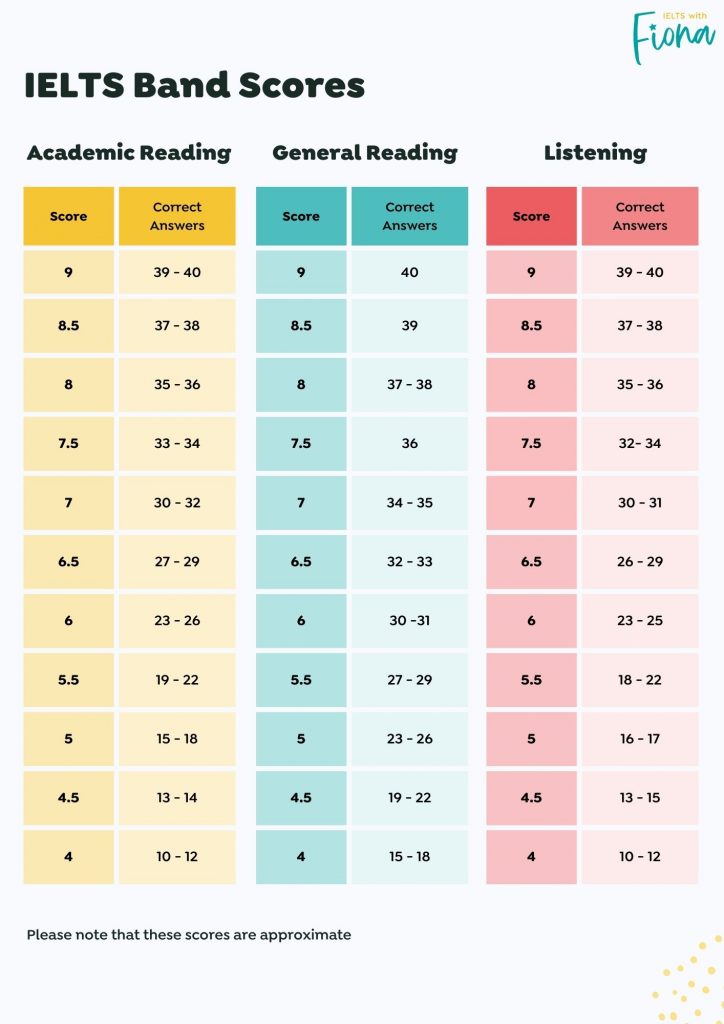
একটু আগেই যেমনটা বলছিলাম, রিডিং টেস্টে আপনার পড়া এবং বোঝার দক্ষতা পরিমাপ করা হয়। সেক্ষেত্রে দেখা হয় আপনি কি পুরো টেক্সটের সারাংশ (gist) ধরতে পারছেন কি না, মূল আইডিয়াটা বুঝতে পারছেন কি না, লেখকের বক্তব্য, উদ্দেশ্য, লেখার লজিকাল আর্গুমেন্ট আপনার কাছে কতটুক পরিষ্কার ইত্যাদি বিষয়গুলো। ৪০টা প্রশ্নের জন্য ৪০ নাম্বার, অর্থাৎ একটি প্রশ্নের সঠিক উত্তরের জন্য এক নাম্বার, কোন নেগেটিভ মার্কিং নেই। তবে উত্তর সঠিক হলেও বানান ভুলের জন্য নাম্বার কেটে দেবে। এই ৪০ নাম্বারকে মোট ৯ ব্যান্ডে ভাগ করা হয়েছে।
জেনে নিন কিভাবে ধীমান Band Score 8.5 তুলে তার IELTS এর সপ্ন জয় করে!
ভালো IELTS Reading Score কেন জরুরী?
আপনি যদি কোন ইংলিশ স্পিকিং কান্ট্রিতে চাকরি, পড়াশোনা, কিংবা স্রেফ বসবাস করতে যেতে চান, তাহলে আপনার ইংরেজি দক্ষতা প্রমানের জন্য IELTS পরীক্ষাতে বসতে হবে। বিশেষ করে চাকরি ও পড়াশোনার ক্ষেত্রে ভালো IELTS স্কোর করা বেশ জরুরী। আর ভালো স্কোরের জন্য যে ভালো IELTS reading scoring-টাও জরুরী সেকথা বলাই বাহুল্য। IELTS পরীক্ষার চারটি মডিউল, Reading, Writing, Speaking এবং Listening। এই সবগুলো অংশের স্কোর মিলিয়ে একটা ফাইনাল স্কোর তৈরি করা হয়। তাই আপনার IELTS reading scoring যেন Standard হয়, সেজন্য কিছু টিপস পরের অংশে যুক্ত করে দেয়া হয়েছে।
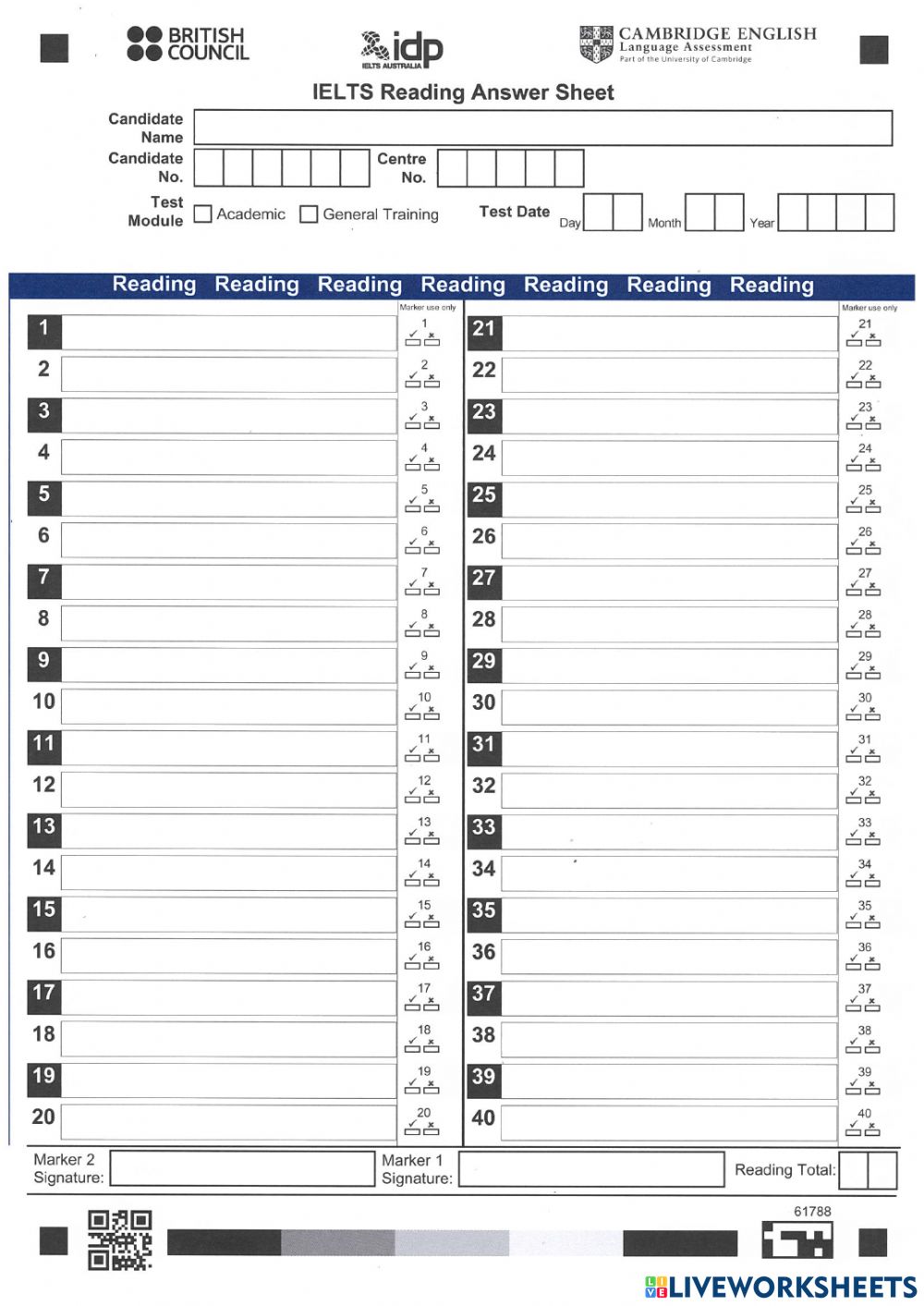
Image Source: Liveworksheets
ভালো IELTS Reading Score অর্জন করবেন যেভাবে: Top 10 Tips to Increase Your IELTS Reading Score
আমরা এর মধ্যে দেখেছি যে, IELTS Reading Score সম্পূর্ণ IELTS পরীক্ষার জন্যই গুরুত্বপূর্ণ, তাই একজন শিক্ষার্থীর উচিত IELTS Reading Score যতটা সম্ভব বাড়ানোর চেষ্টা করা। তাই এই অংশে এমন কিছু Reading Tips আপনাদের সাথে শেয়ার করবো, যা আপনার IELTS Reading Score -কে বাড়াতে সাহায্য করবে।
IELTS Reading Tips 1: উত্তর থাকবে আড়ালে
IELTS Reading Test -এর মূল লক্ষ্য হলো আপনার পড়তে পারার ক্ষমতা কতটুকু তা বের করা। রিডিং টেস্টের প্যারাগ্রাফ সবসময়েই কিছুটা জটিল ভাষায় লেখা থাকে। প্রশ্নকর্তারা আসলে দেখতে চান যে এই জটিল ভাষা বুঝে আপনি প্রশ্নের সঠিক উত্তরটি বের করতে পারেন কি না। টেক্সটের মধ্যেই আপনার উত্তরের একটা আভাস দেয়া থাকবে। সঠিক উত্তরটি হয়তো অন্য শব্দে অন্য বাক্যে টেক্সটে দেয়া আছে, আপনাকে তা বুঝে উত্তর করতে হবে। তাই প্রথম reading tips for IELTS হলো সবসময় খুব সতর্কতার সাথে টেক্সট পড়ুন।
IELTS Reading Tips 2: স্কিমিং
আপনি যদি দ্রুত পড়তে না পারেন, তাহলে IELTS পরীক্ষায় আপনার ফেল করার ব্যাপক সম্ভাবনা আছে! জ্বি, ভালো স্কোর করতে চাইলে আপনাকে অবশ্যই স্কিমিং সম্পর্কে জানতে হবে, আর এটাই দ্বিতীয় IELTS tips for reading। বিষয়টা ভেঙে বলি।
প্রতিটা লেখার মধ্যেই কিছু কিওয়ার্ড থাকে, কিছু গুরুত্বপূর্ণ বাক্য থাকে। টেক্সটে চোখ বুলিয়ে এই কিওয়ার্ড এবং গুরুত্বপূর্ণ বাক্যগুলো পড়ে ফেলার নাম-ই স্কিমিং। এর মধ্য দিয়ে আপনি পুরো লেখার একটা সাধারণ ধারণা পেয়ে যাবেন। এখন প্রশ্ন হলো, স্কিমিং শিখবেন কীভাবে? সেক্ষেত্রে আপনি নিচের স্টেপগুলো ফলো করতে পারেন,
- প্রথম প্যারাগ্রাফটা মনোযোগ দিয়ে পড়ে ফেলুন।
- প্রতিটি প্যারাগ্রাফের প্রথম কয়েকটা বাক্য পড়ে ফেলুন, এতে করে পুরো লেখার একটা ধারণা আপনি পেয়ে যাবেন।
- শেষ প্যারাগ্রাফটা মনযোগ দিয়ে পড়ুন, কারণ পুরো লেখার একটা সারাংশ সাধারণত শেষ প্যারাগ্রাফে দেয়া থাকে।
IELTS Reading Tips 3: স্ক্যানিং
Reading tips for IELTS-এর তৃতীয় স্থানে আছে স্ক্যানিং , এটি হলো নিদির্ষ্ট তথ্য খুঁজে বের করার জন্য দ্রুত পড়ার একটি পদ্ধতি। IELTS Reading Test-এ প্রায়ই তারিখ, নাম, সংখ্যা সম্পর্কিত প্রশ্ন হয়ে থাকে। আপনি যখন স্ক্যান করছেন তখন কয়েকটি বিষয়ে নজর দিন,
- নিদির্ষ্ট তথ্য ও সংখ্যা আন্ডারলাইন করুন। সকল শব্দ পড়ার প্রয়োজন নেই। কোন নাম, তারিখ, চিত্র, পরিসংখ্যানের উপাত্ত আছে কি না তা খুঁজে দেখুন।
- প্রশ্নে থাকা কিওয়ার্ডগুলো মূল লেখায় খুঁজে দেখুন, বা সে সব কিওয়ার্ডের কোন সমার্থক শব্দ দেয়া আছে কি না তা খুঁজে দেখুন। এই কাজটা করতে পারলে আপনার জন্য দ্রুত উত্তর করাটা সহজ হয়ে যাবে।
রিডিং টেস্টে আপনি প্রতিটা প্যারাগ্রাফের জন্য ৩ মিনিটের বেশি সময় পাবেন না, তাই সবসময় ফোকাসড থাকুন, থাকুন এলার্ট।

Image Source: Pixabay
IELTS Reading Tips 4: আইডিয়াতে ফোকাস করুন, শব্দে না
প্যারাগ্রাফ পড়ার পর নিজের ভাষায় সেটা ব্যাখ্যা করুন। এই কাজটা করতে পারলে আপনার কাছে প্যারাগ্রাফের মূল আইডিয়াটা পরিষ্কার হয়ে যাবে, শব্দগুলো আপনার কাছে তখন আর মুখ্য মনে হবে না। এটা IELTS tips for reading -এর চতুর্থ কিন্তু সবচেয়ে গুরুত্বপূর্ণ টিপস।
IELTS Reading Tips 5: টেক্সটে প্রমান খুঁজুন, আন্ডারলাইন করুন, নাম্বারিং করুন
Reading tips for IELTS -এর পঞ্চম টিপস হলো টেক্সটে উত্তরের পক্ষে প্রমান খোঁজা, তা দাগানো এবং নাম্বারিং করা। বিষয়টা সহজ করে দিই,
- রিডিং প্যাসেজে সঠিক উত্তর অথবা সঠিক উত্তর হতে পারে এমন শব্দগুলো খুঁজে বের করুন। প্রশ্নের কিওয়ার্ডের সাথে মিলিয়ে দেখুন যে এটাই আপনার উত্তর কি না। একেই বলা হচ্ছে প্রমান খোঁজা৷
- এবার উত্তরটা দাগিয়ে ফেলুন
- এবার উত্তরের নাম্বারটা প্রশ্নপত্রে প্রশ্নের উপর লিখে ফেলুন। কাজ এটুকই!
এর মাধ্যমে আপনার আর বারবার প্যারাগ্রাফগুলো পড়তে হবে না, কিংবা উত্তর নিয়ে কোন কনফিউশনে ভুগতে হবে না৷ আর মনে রাখবেন, প্রতিটা প্রশ্নের কেবল একটিই সঠিক উত্তর আছে, এভাবেই পরীক্ষাটা ডিজাইন করা হয়েছে। আর এই কারনেই একটু ভালোভাবে নজর দিলে আপনি সঠিক উত্তরটা অবশ্যই খুজে পাবেন৷
IELTS Reading Tips 6: ওয়ার্ড মিনিং না জানলে ভয়ের কিছু নেই!
ধরা যাক এমন একটা শব্দ আপনি বাক্যে দেখলেন, যার অর্থ আপনি জানেন না। সেক্ষেত্রে বুদ্ধিমানের কাজ হলো ঐ শব্দের আশেপাশের শব্দগুলো দেখা, কারণ আশেপাশের শব্দগুলো আপনাকে বাক্য সম্পর্কে একটা সাধারণ ধারণা দেবে, ফলে আপনি মোটামুটি একটা ধারণা করতে পারবেন যে ঐ শব্দটা কি কোন হ্যা-বোধক নাকি না-বোধক শব্দ, কোন মানুষের নাম নাকি চাকরির নাম, কোন প্রাণীর নাম নাকি কোন একটা বৈশিষ্ট্য।
এক্ষেত্রে আপনি শব্দের প্রিফেক্স দেখলেও একটা ধারনা পেয়ে যাবেন। যেমন শব্দের শেষে un থাকলে সেটা কোন কাজ না করা বোঝায় (Unfasten- বাঁধন খোলা), re থাকলে সেটা দ্বারা বোঝায় কোন একটা কাজ পুনরায় করা (rearrange- পুনর্বিন্যাস), এমনটা আরকি।
আবার গ্রামারও আপনাকে এক্ষেত্রে বেশ সাহায্য করতে পারে। যেমন ধরা যাক আপনি কোনো একটা শব্দের পরের শব্দটাই Noun পেলেন, সেক্ষেত্রে আপনার অজানা শব্দটা একটা Adjective হবে।
তবে এত কিছুর পরেও যদি আপনার মনে হয় শব্দটা বুঝতে পারছেন না, তাহলেও ঘাবড়ানোর কিছু নেই। আপাতত প্রশ্নটা স্কিপ করে সামনে চলে যান। আর অবশ্যই দাগিয়ে যান যেন পরে আবার সময় পেলে এই প্রশ্ন এবং শব্দটা নিয়ে চিন্তা করতে পারেন। এই reading tips for IELTS-টি ফলো করতে পারলে আপনার টেনশন ৮০ ভাগ কমে যাবে।

Image Source: Freepik
IELTS Reading Tips 7: বাদ যাবে না একটি উত্তর!
আরেকটি বেশ গুরুত্বপূর্ণ IELTS tips for reading হলো, কোনভাবেই কোন প্রশ্ন উত্তর না করে আসবেন না। এটা ভর্তি পরীক্ষা বা বিসিএস পরীক্ষা নয় যে ভুল উত্তরের জন্য নাম্বার কাটা হবে। বরং একদম না পারলে যে কোন একটা উত্তর অনুমান করে লিখুন, ভাগ্য ভালো হলে সেটা সঠিক হয়েও যেতে পারে! একটা সঠিক উত্তরেও ব্যান্ড স্কোরের ব্যাপক পরিবর্তন হতে পারে।
IELTS Reading Tips 8: পড়ার গতি বাড়ান
৬০ মিনিটে পুরো IELTS Reading test সম্পন্ন করতে হলে আপনাকে দ্রুত রিডিং পড়া এবং বোঝার অভ্যাস আয়ত্ত্ব করতে হবে। Reading tips for IELTS এর এই অংশে তাই রিডিং স্পিড বাড়ানোর জন্য বেশ কার্যকরী একটি পদ্ধতি আপনার সামনে তুলে ধরছি,
- একেকবার একটা করে শব্দ না পড়ে, একসাথে তিনটা শব্দ পড়ার চেষ্টা করুন। ধীরে ধীরে শব্দ সংখ্যা বাড়ান৷
- কাজটা প্রথমদিকে একটু কঠিন মনে হতে পারে, সেক্ষেত্রে একটা কলম বা পেন্সিলকে পয়েন্টার হিসেবে ব্যবহার করতে পারেন। পয়েন্টার প্রতি তিনটা শব্দ পরপর রেখে পড়ার অভ্যাস করুন।
- প্রথমদিকে এমন হবে যে আপনি পুরো প্যারাগ্রাফ এই পদ্ধতিতে পড়ে ফেলেছেন, কিন্তু কিছুই বোঝেননি! এমনটা হলেও কিন্তু বিপদ। তাই শুরুতে ধীরে ধীরে অভ্যাসটা আয়ত্ত্বে আনার চেষ্টা করুন, যেন দ্রুতও পড়া যায়, আবার টেক্সটের আইডিয়াটাও বোঝা যায়।
এক্ষেত্রে আপনাকে সাহায্য করতে পারে এমন বেশ কিছু ভিডিও ইউটিউবে পেয়ে যাবেন। তবে আমি বলবো আপনি টনি বুজানের স্পিড রিডিং বইটা কিনে ফেলুন, এরপর সেই অনুসারে প্রাকটিস করতে থাকুন৷
আরো পড়ুন: IELTS Speaking এর ভয়কে জয় করতে জেনে নিন সেরাদের সেরা কিছু টিপস!
IELTS Reading Tips 9: স্টাডি ম্যাটেরিয়াল নির্বাচনে সতর্ক থাকুন
হ্যা, নীলক্ষেতে পাওয়া কেম্ব্রিজ সিরিজের বইগুলো থেকে বিগত দিনের IELTS প্রশ্নগুলো পড়লে বেশ ভালো IELTS Reading Score তোলা সম্ভব। কিন্তু সত্যি বলতে কি, কাজটা কিছুদিন পরেই আপনার কাছে বোরিং মনে হবে। তাই আপনি যা করতে পারেন তা হলো, নিজের আগ্রহ আছে এমন টপিক সম্পর্কে লেখাগুলো খুজে বের করে পড়তে পারেন৷ এতে করে আপনি পড়তে আরাম পাবেন, প্রাকটিস করাও হবে, আবার প্রাক্টিস ভালো হওয়ার ফলে আপনার ভাষাগত দক্ষতা বাড়বে, যা আপনাকে পরবর্তী সময়ে সাহায্য করবে পড়াশোনা এবং কাজের ক্ষেত্রে৷
তাই ট্রেইনাররা reading tips for IELTS হিসেবে একজন শিক্ষার্থীকে শুরুতেই কঠিন কোন বই বেছে না নেয়ার পরামর্শ দেন। আপনি যদি শুরুতেই এডগার এলান পো-এর বই নিয়ে বসেন, তাহলে কিছুক্ষণ পরেই আপনার আগ্রহ উবে যেতে বাধ্য! তাই শুরুটা হোক কোন সহজ বই দিয়ে। হ্যারি পটার পড়তে পারেন, কিংবা এটমিক হ্যাবিটস বা ডোপামিন ডিটক্সের মতো সহজ বোধ্য মোটিভেশানাল বইগুলো দেখতে পারেন।
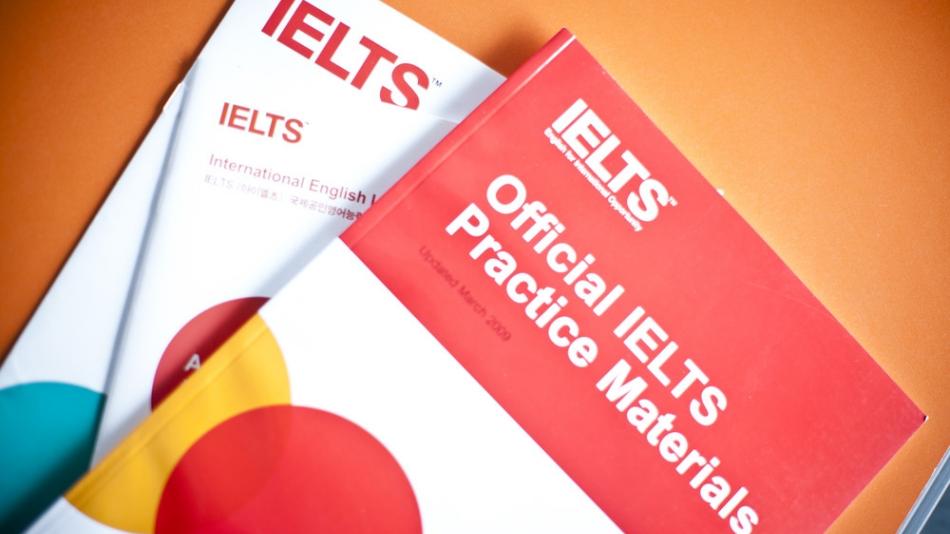
IELTS Reading Tips 10: রিডিং টাইমকে অর্গানাইজ করুন
IELTS tips for reading এর এই অংশটি আসলে পরীক্ষার হল নয়, বরং পরীক্ষাপূর্ব প্রস্তুতির জন্য সহায়ক হতে পারে। অনেক শিক্ষার্থী- আমি নিজেও- কোন একটা লেখা বেশিক্ষণ পড়তে পারে না। লেখাটা খুব বেশি আকর্ষণীয় না হলে আমি হয়তো কিছুক্ষণ পড়ার পর ইউটিউব দেখি, ইমেইল চেক করি, ফ্রিজ খুলে দেখি খাওয়ার কিছু আছে কি না! এভাবে বেশ ভালোরকমের সময় নষ্ট হয়। তো সমাধান কী?
- পড়ার আগে একটা টাইমার সেট করে নিন। প্রথম দিকে সেটা ৩০ মিনিট রাখতে পারেন। দিনকে দিন এই টাইমারে সময় বাড়াবেন।
- পড়ার একটা নির্ধারিত সময় ও জায়গা বের করে নিন। অবশ্যই পড়তে বসার সময় ফোন দূরে রাখবেন, বা টাইমার ফোনে সেট করলে ফোনের ডেটা কানেকশন অফ রাখবেন, এরোপ্লেন মুডে রাখবেন।
- হেডফোন ব্যবহার করতে পারেন। ইউটিউবে প্রচুর স্টাডি মিউজিক পাওয়া যায়। আমি ব্যক্তিগতভাবে বৃষ্টির আওয়াজ শুনি, যা আমাকে বাইরের সকল আওয়াজ থেকে দূরে রাখে।
IELTS Course by Munzereen Shahid
কোর্সটি করে যা শিখবেন:
শেষ কথা
আমার এই পুরো লেখায় আমি দেখাতে চেয়েছি IELTS Reading Test আসলে কী, IELTS reading question types-গুলো কী কী, ভালো IELTS Reading Score তুলতে চাইলে কি কি করণীয়- এই বিষয়গুলো। এখন প্রশ্ন হতে পারে, কোচিং কি একান্ত প্রয়োজনীয়? এটা নির্ভর করে সম্পূর্ন আপনার সময় এবং সুযোগের ওপর। তবে, আপনাদের কথা মাথায় রেখে টেন মিনিট স্কুল ইতোমধ্যে নিয়ে এসেছে IELTS Course by Munzereen Shahid, যা আপনাকে IELTS পরীক্ষার পরিপূর্ণ প্রস্তুতি নিতে সাহায্য করবে। এই কোর্সে আপনি IELTS পরীক্ষার বিভিন্ন অংশের ফরম্যাট, প্রশ্ন ও উত্তরের ধরন, গুরুত্বপূর্ণ টিপস, ট্রিকস ও স্ট্র্যাটেজি পেয়ে যাবেন। থাকছে লেকচার শিট সহ ৫১টি ভিডিও, আর ১৫টি মক টেস্ট। তাই আর দেরি কেন? এখনি জয়েন করে ফেলুন কোর্সটিতে, আর দূর করে নিন IELTS পরীক্ষা সম্পর্কে আপনার যাবতীয় ভীতি, উত্তর পেয়ে যান সকল প্রশ্নের, আর এগিয়ে যান দূর্বার গতিতে নিজের লক্ষ্যে, নিজের স্বপ্নের দিকে। Never Stop Learning!

Image Source: Freepik
IELTS Reading Test: Sample question:
A
Investigating Children’s Language A For over 200 years, there has been an interest in the way children learn to speak and understand their first language. Scholars carried out several small-scale studies, especially towards the end of the 19th century, using data they recorded in parental diaries. But detailed, systematic investigation did not begin until the middle decades of the 20th century, when the tape recorder came into routine use. This made it possible to keep a permanent record of samples of child speech, so that analysts could listen repeatedly to obscure extracts, and thus produce a detailed and accurate description. Since then, the subject has attracted enormous multidisciplinary interest, notably from linguists and psychologists, who have used a variety of observational and experimental techniques to study the process of language acquisition in depth.
B
Central to the success of this rapidly emerging field lies the ability of researchers to devise satisfactory methods for eliciting linguistic data from children. The problems that have to be faced are quite different from those encountered when working with adults. Many of the linguist’s routine techniques of inquiry cannot be used with children. It is not possible to carry out certain kinds of experiments, because aspects of children’s cognitive development – such as their ability to pay attention or to remember instructions – may not be sufficiently advanced. Nor is it easy to get children to make systematic judgments about language, a task that is virtually impossible below the age of three. And anyone who has tried to obtain even the most basic kind of data – a tape recording of a representative sample of a child’s speech – knows how frustrating this can be. Some children, it seems, are innately programmed to switch off as soon as they notice a tape recorder being switched on.
C
Since the 1960s, however, several sophisticated recording techniques and experimental designs have been devised. Children can be observed and recorded through one-way-vision windows or using radio microphones so that the effects of having an investigator in the same room as the child can be eliminated. Large-scale sampling programs have been carried out, with children sometimes being recorded for several years. Particular attention has been paid to devising experimental techniques that fall well within a child’s intellectual level and social experience. Even pre-linguistic infants have been brought into the research: acoustic techniques are used to analyze their vocalizations, and their ability to perceive the world around them is monitored using special recording equipment. The result has been a growing body of reliable data on the stages of language acquisition from birth until puberty.
IELTS LIVE Batch
এই কোর্সটি আপনাকে কীভাবে সাহায্য করবে?
D
There is no single way of studying children’s language. Linguistics and psychology have each brought their own approach to the subject, and many variations have been introduced to cope with the variety of activities in which children engage, and the great age range that they present. Two main research paradigms are found.
E
One of these is known as ‘naturalistic sampling’. A sample of a child’s spontaneous use of language is recorded in familiar and comfortable surroundings. One of the best places to make the recording is in the child’s own home, but it is not always easy to maintain good acoustic quality, and the presence of the researcher or the recording equipment can be a distraction (especially if the proceedings are being filmed). Alternatively, the recording can be made in a research center, where the child is allowed to play freely with toys while talking to parents or other children, and the observers and their equipment are unobtrusive.
F
A good quality, representative, naturalistic sample is generally considered an ideal datum for child language study. However, the method has several limitations. These samples are informative about speech production, but they give little guidance about children’s comprehension of what they hear around them. Moreover, samples cannot contain everything, and they can easily miss some important features of a child’s linguistic ability. They may also not provide enough instances of a developing feature to enable the analyst to make a decision about the way the child is learning. For such reasons, the description of samples of child speech has to be supplemented by other methods.
G
The other main approach is through experimentation, and the methods of experimental psychology have been widely applied to child language research. The investigator formulates a specific hypothesis about children’s ability to use or understand an aspect of language and devises a relevant task for a group of subjects to undertake. A statistical analysis is made of the subject’s behavior, and the results provide evidence that supports or falsifies the original hypothesis.
H
Using this approach, as well as other methods of controlled observation, researchers have come up with many detailed findings about the production and comprehension of groups of children. However, it is not easy to generalize the findings of these studies. What may obtain in a carefully controlled setting may not apply in the rush of daily interaction. Different kinds of subjects, experimental situations, and statistical procedures may produce different results or interpretations. Experimental research is therefore a slow, painstaking business; it may take years before researchers are convinced that all variables have been considered and a finding is genuine.
Questions 1 – 5
Reading Passage 1 has eight paragraphs, A-H. Which paragraph contains the following information? Write the correct letter, A-H, in boxes 1-5 on your answer sheet. NB You may use any letter more than once.
- the possibility of carrying out research on children before they start talking
- the difficulties in deducing theories from systematic experiments
- the differences between analyzing children’s and adults’ language
- the ability to record children without them seeing the researcher
- the drawbacks of recording children in an environment they know
Questions 6 – 9
Do the following statements agree with the information given in Reading Passage 1? In boxes 6-9 on your answer sheet, write TRUE if the statement agrees with the information FALSE if the statement contradicts the information NOT GIVEN if there is no information on this.
- In the 19th century, researchers studied their own children’s language.
- Attempts to elicit very young children’s opinions about language are likely to fail.
- Radio microphones are used because they enable researchers to communicate with a number of children in different rooms.
- Many children enjoy the interaction with the researcher
Questions 10 – 14
Complete the summary below. Choose NO MORE THAN TWO WORDS from the passage for each answer. Write your answers in boxes 10-14 on your answer sheet.
Ways of investigating children’s language
One method of carrying out research is to record children’s spontaneous language use. This can be done in their homes, where, however, it may be difficult to ensure that the recording is of acceptable (10) ………… . Another venue which is often used is a (11) ………… , where the researcher can avoid distracting the child. A drawback of this method is that it does not allow children to demonstrate their comprehension. An alternative approach is to use methodology from the field of (12) ………… . In this case, a number of children are asked to carry out a (13) ………… , and the results are subjected to a (14) …………
IELTS Reading Test: Sample Question Solution
| 1 | 2 | 3 | 4 | 5 | 6 | 7 |
| C | H | B | C | E | TRUE | TRUE |
| 8 | 9 | 10 | 11 | 12 | 13 | 14 |
| FALSE | NOT GIVEN | acoustic quality | research centre/center | experimental psychology | (relevant) task | statistical analysis |
তথ্যসূত্র
খুব সহজে ইংরেজি শিখতে আজই এনরোল করুন আমাদের ফ্রি কোর্সগুলোতেঃ
- Study Abroad Complete Guideline
- English For Everyday
- Academic English Grammar
- English Grammar Fundamentals
- Pronunciation Mistakes
- Grammar Foundation Course
আমাদের কোর্সগুলোতে ভর্তি হতে ক্লিক করুন:
- IELTS Course by Munzereen Shahid
- IELTS Mock Test Solutions by Munzereen Shahid
- ঘরে বসে Spoken English Course by Munzereen Shahid
- সবার জন্য Vocabulary by Munzereen Shahid
- Spoken English for Kids by Munzereen Shahid
IELTS নিয়ে গুরুত্বপূর্ণ সব গাইডলাইনের নোটস পেতে ভিজিট করুনঃ
বিদেশে উচ্চশিক্ষার জার্নিটা আরো সহজ করতে পরিপূর্ণ গাইডলাইন পেয়ে যাবেন এই প্লেলিস্টটিতেঃ
- Study Abroad Series | Higher Education | Munzereen Shahid
১০ মিনিট স্কুলের ক্লাসগুলো অনুসরণ করতে সরাসরি চলে যেতে পারেন এই লিঙ্কে: www.10minuteschool.com

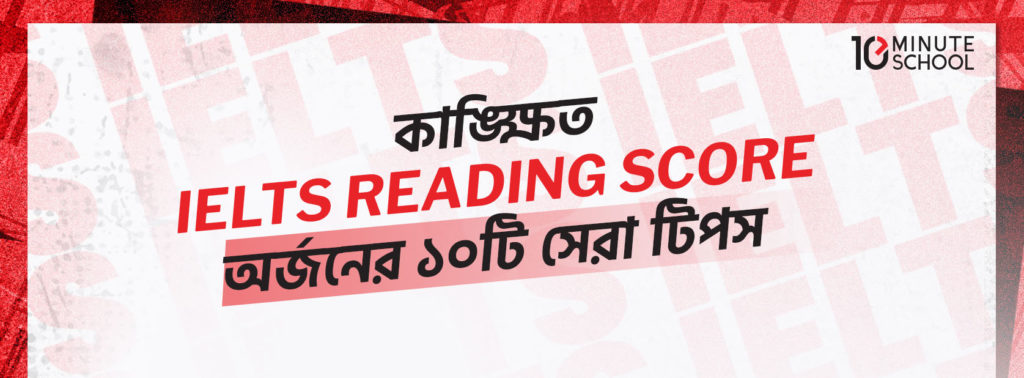
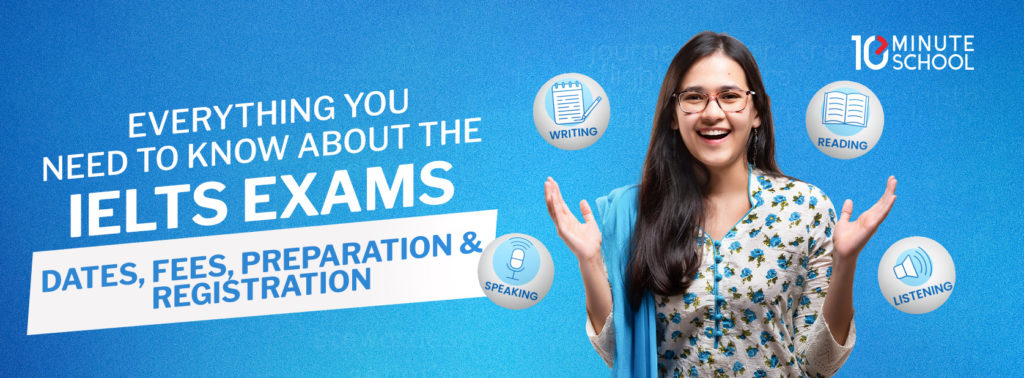
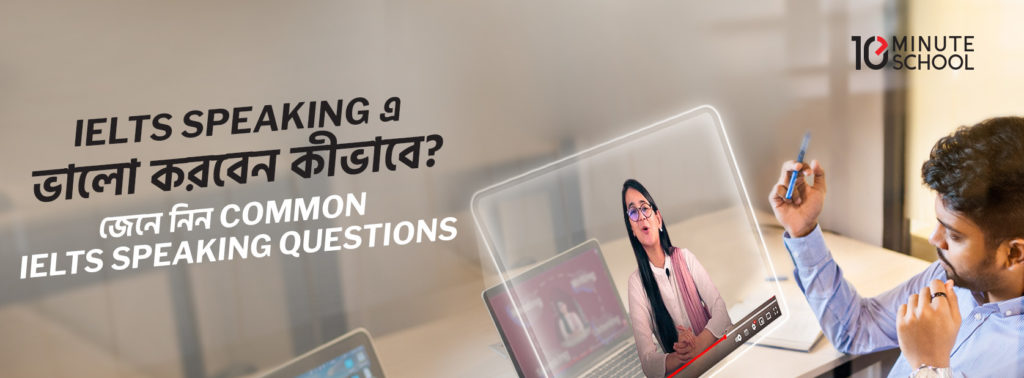
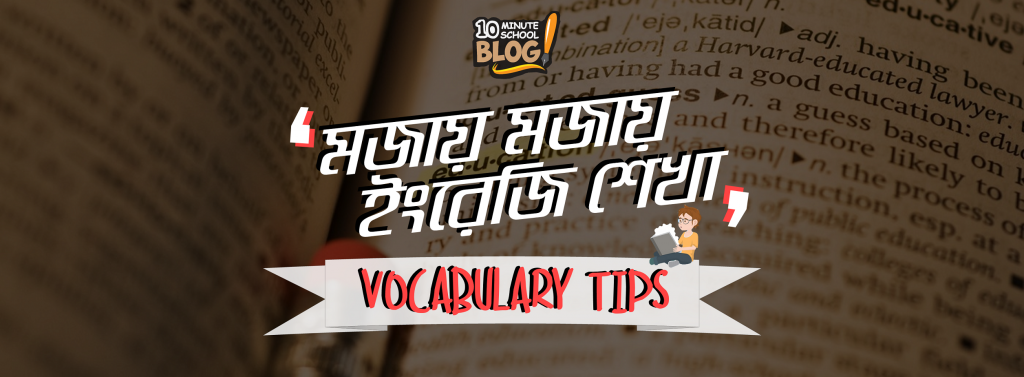
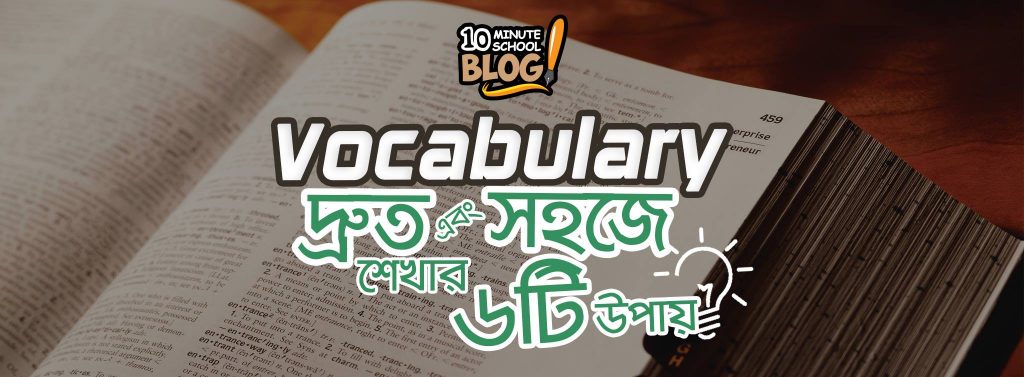
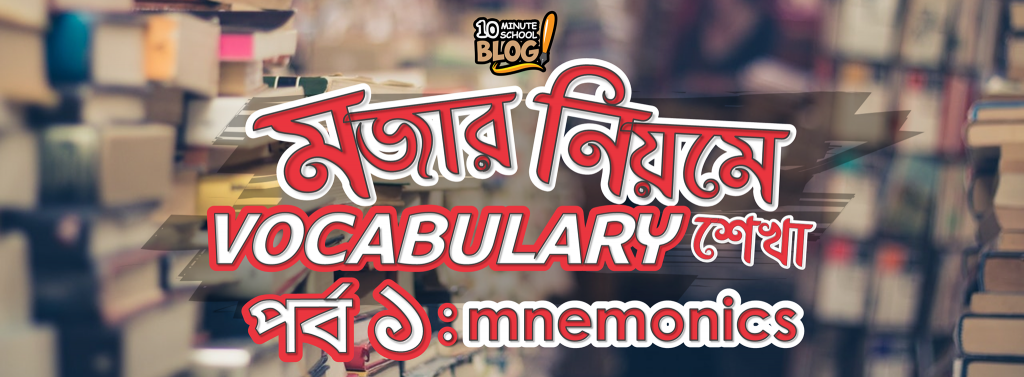
আপনার কমেন্ট লিখুন